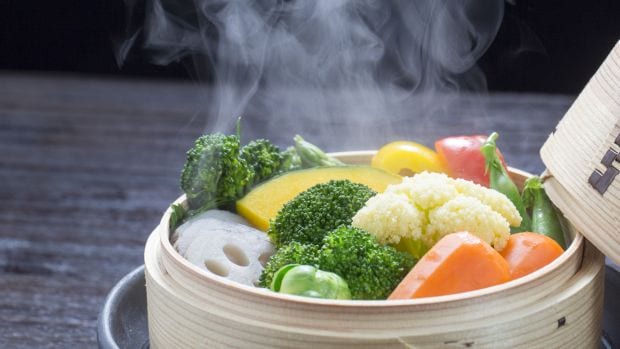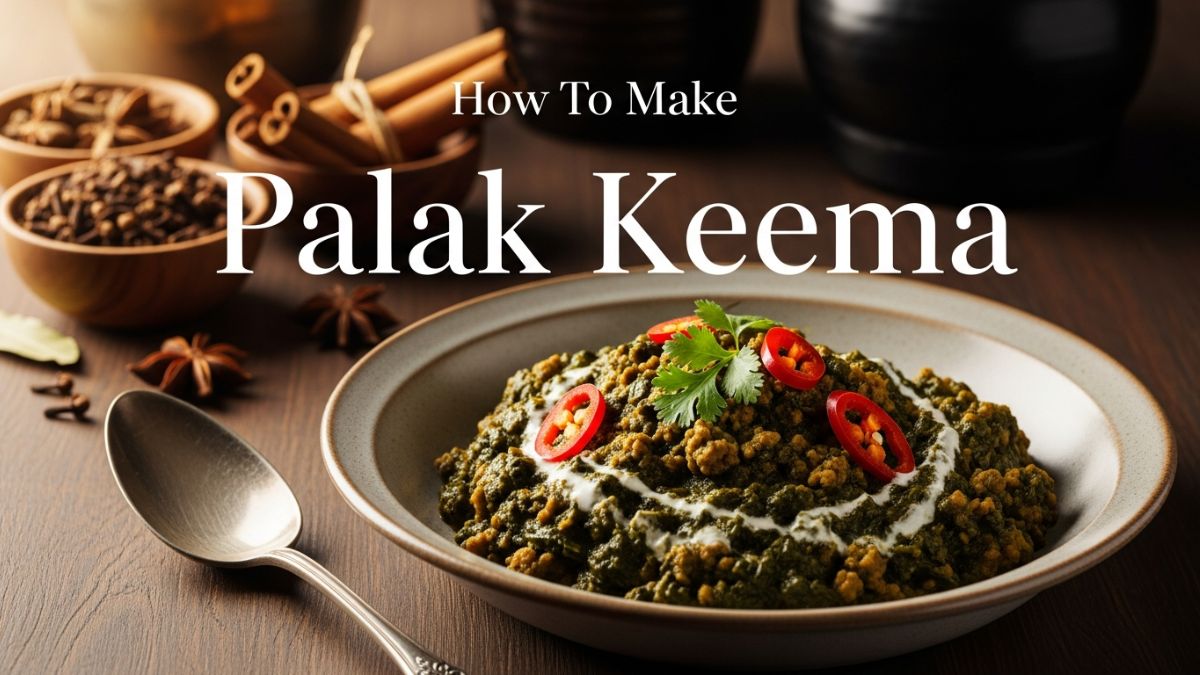You have probably asked yourself this at least once: should you boil your vegetables or steam them? It sounds like a small kitchen dilemma, but this simple choice can change everything, from how your vegetables taste and look to how many nutrients they actually deliver. One method softens and comforts, while the other keeps things light and fresh. If you have ever wondered why your broccoli sometimes turns dull or why your carrots lose their sweetness, the answer might lie in how you are cooking them.
Both steaming and boiling are classic techniques. They are easy, oil-free, and perfect for healthy everyday meals. Yet, they behave quite differently once the heat rises. So, which one helps your vegetables keep their colour, flavour, and goodness intact? Let us find out.
Also Read: 5 Vegetables You Should Always Cook And Consume To Gain Full Nutrition
What Happens When You Steam Vegetables?
When you steam vegetables, you are cooking them gently with the vapour rising from boiling water, not the water itself. The vegetables sit above the liquid in a steamer basket or colander, and the steam softens them evenly without washing away their natural flavour. Because they do not come in direct contact with water, most nutrients, especially water-soluble vitamins such as Vitamin C and the B-complex group, stay locked in. That is why steamed vegetables often look brighter and taste fresher.
You will notice that greens remain vivid, carrots turn deeper in colour, and broccoli keeps its satisfying crunch. Steaming also allows the natural sweetness of vegetables to shine through, giving them a clean, balanced flavour.
Pro tip: Add a few drops of lemon juice or a pinch of herbs to the steaming water. It subtly enhances both flavour and aroma without adding calories.
And if you are short on time or simply craving a healthy meal without turning on the stove, many restaurants now offer lightly steamed vegetable bowls and salads that you can order online through food delivery apps.

What Happens When You Boil Vegetables?
Boiling is simple and familiar. You drop your vegetables into a pot of hot water and let them cook at 100 degree Celsius until tender. It is fast, fuss-free, and ideal for days when you are multitasking or cooking in bulk. However, there is a catch. Many nutrients escape into the water during boiling. Unless you use that water in a soup, dal, or curry, those nutrients are lost.
Boiled vegetables also tend to become softer and, if left too long, slightly mushy or bland. This happens because boiling breaks down the cell walls and draws out some of the vegetable's natural flavour. That said, boiling still has its advantages. It is perfect for starchy vegetables such as potatoes, sweet potatoes, and beetroot, which become creamier and easier to digest when boiled.
Pro tip: Do not throw away the leftover water. It is full of nutrients. Use it in soups, curries, or even to knead roti dough for an extra boost.
Steaming Vs Boiling: What Is The Difference?
| Aspect | Steaming | Boiling |
| How It Works | Cooks with steam from boiling water | Cooks by submerging vegetables in water |
| Nutrient Retention | High - fewer vitamins are lost | Lower - vitamins leach into water |
| Texture | Firm, crisp, colourful | Soft, sometimes mushy |
| Flavour | Natural and slightly sweet | Milder, may need seasoning |
| Best For | Broccoli, spinach, carrots, beans | Potatoes, corn, beetroot, peas |
| Water Use | Minimal | Higher |
| Time And Ease | Slightly longer, needs setup | Faster and simpler |
In short, boiling is about convenience, while steaming is about care. Steaming preserves what nature put into your vegetables in the first place.
Also Read:Are Raw Vegetables More Nutritious Than Cooked Vegetables? Nutritionist Weighs In
Steaming Or Boiling: Which Cooking Method Wins?
If we are talking about overall nutrition and taste, steaming takes the crown. A study published in the Journal of Agricultural and Food Chemistry has shown that steaming preserves antioxidants and vitamins far better than boiling. Steamed vegetables also hold on to their natural colour and crunch, which means they not only taste better but look more appealing too.
However, boiling still wins when you need a soft texture, such as for mashed potatoes, soups, or baby food. So, it is not about never boiling again; it is about knowing when each method works best.
Which Method Is Healthier?
Both methods make vegetables easier to digest by breaking down tough fibres, but steaming has a slight advantage. It keeps digestion-friendly compounds intact, especially in cruciferous vegetables such as cabbage, cauliflower, and broccoli. Boiling, on the other hand, can wash away some of these compounds.
Ayurveda also favours steaming, calling it a sattvic method of cooking - one that preserves prana, or life energy, in food. In simpler terms, steamed food feels lighter, fresher, and more energising.
According to Dr Ritika Samaddar, Regional Head of Dietetics at Max Healthcare, "Steaming is one of the healthiest cooking methods. It retains vitamins and minerals without oil, making it ideal for those managing weight, diabetes, or heart health."
Mistakes To Avoid While Steaming Vegetables:
Steaming is healthy, but it can be easy to get wrong. Watch out for these common mistakes:
1. Oversteaming: The biggest mistake. Vegetables should be tender-crisp, not soggy.
2. Crowding the basket: Steam must circulate freely; too many vegetables trap moisture.
3. Uneven cuts: Cut vegetables evenly so they cook at the same rate.
4. Skipping seasoning: Steam can slightly mute flavours. Add salt or herbs to the water for a subtle lift.
Bonus tip: Finish steamed vegetables with olive oil, lemon juice, or a dash of chaat masala for instant flavour.
Also Read: Is It Bad To Eat Raw Vegetable Salads At Night? Experts Break It Down
Mistakes To Avoid While Boiling Vegetables:
Boiling may seem foolproof, but a few small mistakes can cost both flavour and nutrition.
1. Boiling too long: Most vegetables need only three to six minutes. Any longer and they lose both texture and nutrients.
2. Not salting the water: A pinch of salt helps vegetables stay firm and taste better.
3. Discarding the water: Reuse it unless it tastes bitter - it is full of nutrients.
4. Adding vegetables to cold water: Always add them after the water starts boiling. It locks in colour and nutrients more effectively.
Chef's trick: For bright green beans or broccoli, boil briefly, then plunge them into cold water. This stops cooking instantly and keeps their colour vibrant.
If you do not feel like prepping or waiting, you can also find healthy boiled vegetable mixes, soups, and curries available for quick delivery on most food apps - perfect for a nutritious dinner on a busy day.

Photo Credit: UnSplash
How To Get The Best Of Both Worlds?
If you cannot decide between the two, combine them. For example, parboil dense vegetables such as carrots or beans for a few minutes, then finish them with a quick steam. This method keeps them crisp yet tender and saves time too.
You can also try a boil-and-steam combo. Boil starchy vegetables like potatoes while steaming greens on a rack above them. It is energy-efficient and helps you balance flavour and nutrition in one go.
Always remember, smart cooking is not about strict rules. It is about balance. Knowing how to pair techniques makes your everyday meals healthier and tastier.
The Bottom Line:
Both steaming and boiling have their place in a healthy kitchen. If your goal is to retain nutrients, colour, and crunch, steaming is the better choice. It is gentle, clean, and ideal for everyday healthy eating.
But when you are cooking comfort dishes such as dal, soup, or mashed vegetables, boiling still works beautifully - especially when the cooking water becomes part of the dish.
So next time you stand before a chopping board full of vegetables, ask yourself: "Do I want freshness and nutrition, or warmth and comfort?" You will know which cooking method to go for. Happy cooking!
Disclosure: This article may contain links to third-party websites or resources. However, this does not affect the integrity of the content, and all recommendations and views are based on our independent research and judgment.
About Somdatta SahaExplorer- this is what Somdatta likes to call herself. Be it in terms of food, people or places, all she craves for is to know the unknown. A simple aglio olio pasta or daal-chawal and a good movie can make her day.











